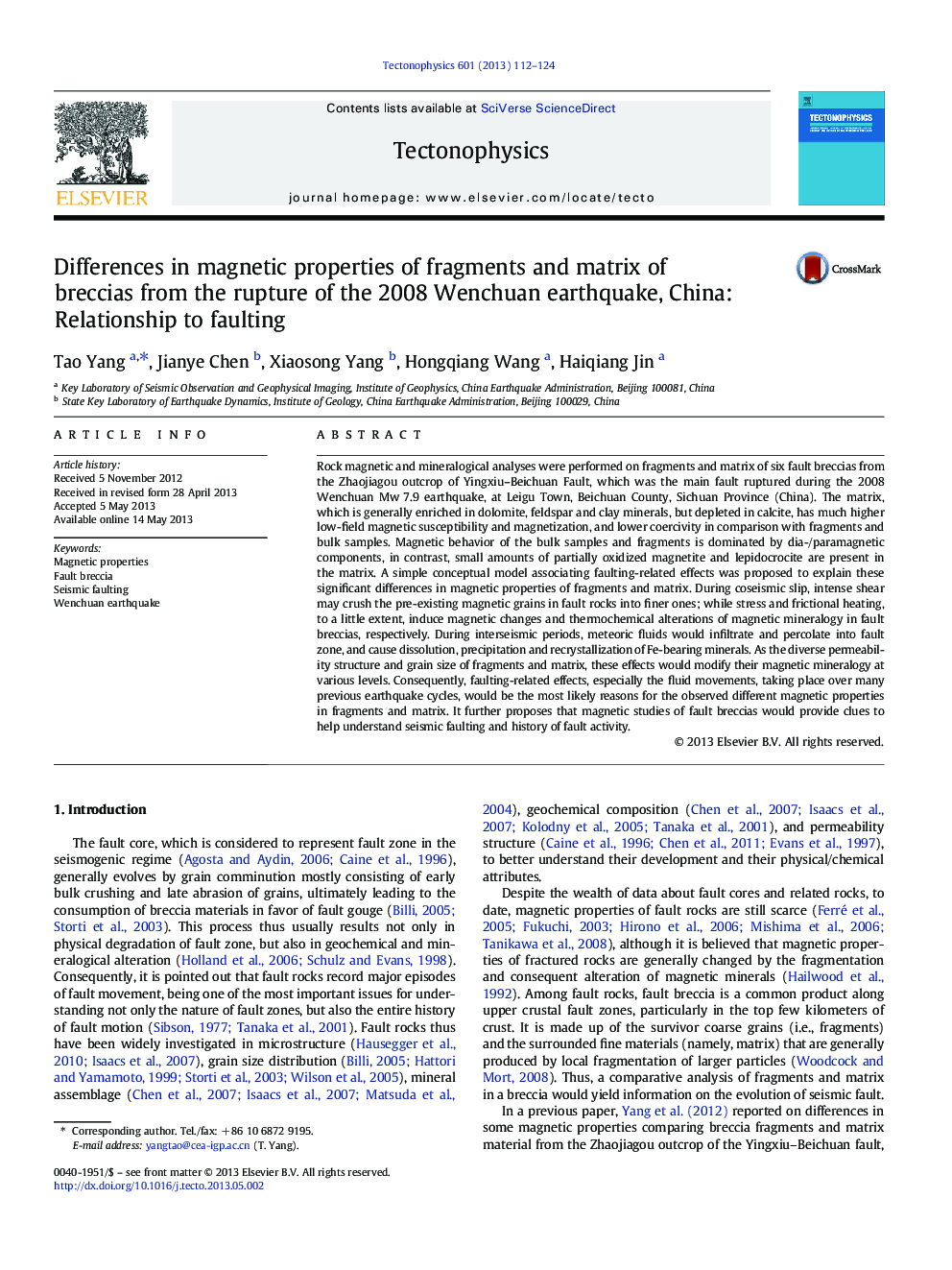| کد مقاله | کد نشریه | سال انتشار | مقاله انگلیسی | نسخه تمام متن |
|---|---|---|---|---|
| 4692274 | 1636786 | 2013 | 13 صفحه PDF | دانلود رایگان |

• We present detailed magnetic properties of different components of fault breccia.
• Fragments and matrix of breccia show marked differences in magnetic properties.
• Faulting-related effects modify magnetic mineralogy in fragments and matrix.
• Magnetic study of fault rock would help understand evolution of seismic fault.
Rock magnetic and mineralogical analyses were performed on fragments and matrix of six fault breccias from the Zhaojiagou outcrop of Yingxiu–Beichuan Fault, which was the main fault ruptured during the 2008 Wenchuan Mw 7.9 earthquake, at Leigu Town, Beichuan County, Sichuan Province (China). The matrix, which is generally enriched in dolomite, feldspar and clay minerals, but depleted in calcite, has much higher low-field magnetic susceptibility and magnetization, and lower coercivity in comparison with fragments and bulk samples. Magnetic behavior of the bulk samples and fragments is dominated by dia-/paramagnetic components, in contrast, small amounts of partially oxidized magnetite and lepidocrocite are present in the matrix. A simple conceptual model associating faulting-related effects was proposed to explain these significant differences in magnetic properties of fragments and matrix. During coseismic slip, intense shear may crush the pre-existing magnetic grains in fault rocks into finer ones; while stress and frictional heating, to a little extent, induce magnetic changes and thermochemical alterations of magnetic mineralogy in fault breccias, respectively. During interseismic periods, meteoric fluids would infiltrate and percolate into fault zone, and cause dissolution, precipitation and recrystallization of Fe-bearing minerals. As the diverse permeability structure and grain size of fragments and matrix, these effects would modify their magnetic mineralogy at various levels. Consequently, faulting-related effects, especially the fluid movements, taking place over many previous earthquake cycles, would be the most likely reasons for the observed different magnetic properties in fragments and matrix. It further proposes that magnetic studies of fault breccias would provide clues to help understand seismic faulting and history of fault activity.
Journal: Tectonophysics - Volume 601, 2 August 2013, Pages 112–124